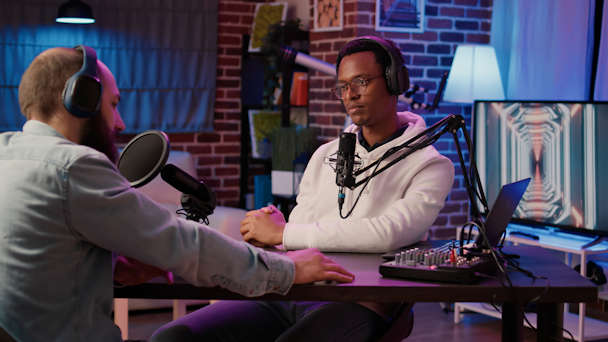From Law & Order to Serial: what podcast advertising can learn from TV
It’s high time that podcasters take a page from TV’s playbook, argues Integral Ad Science senior vice-president Sarah Martinez.

Podcast ad revenue is forecasted to triple from last year’s $1bn to $4bn in 2024 / Adobe Stock
Where consumers go, advertisers follow. Today, this maxim applies to digital audio like never before. One reason advertisers are quickly matching consumer excitement around digital audio is the effectiveness of audio ads. Nearly half of US podcast listeners state that they trust podcast ads more than advertisements in other mediums, while 81% report taking action after hearing a podcast ad.
With over 2.4m podcasts across an increasing variety of genres, audio provides marketers with an opportunity to reach highly engaged audiences. However, while targeting on a subject matter level may help a brand reach its audience, the content of individual episodes or songs continues to cause marketers brand safety concerns.
Exploring the similarities between brand safety on TV and audio
We usually talk about podcasts like we do TV – “Did you catch the latest episode of..?” “Did you hear what happened on..?” But while well-established brand safety guidelines within the TV industry exist, those still don’t exist in audio. With podcast ad revenue forecasted to triple from last year’s $1bn to a whopping $4bn in 2024, ensuring suitability for advertisers on podcasts has never been so critical.
If listening to a podcast is similar to watching a show, can we say the same for advertising? Are there lessons from TV that we could apply to audio? I certainly think so.
If you ask anyone in the TV business in the 90s, they’ll remember how buyers had to pore over hundreds of scripts to ensure brands didn’t appear next to ‘unsafe’ content. For example, if you were after the 50-70-year-old target audience, the popular TV show Law & Order seemed like the ideal placement. Even back then, marketers understood that context mattered, and while Law & Order may have been seen as a sometimes ‘violent’ show, its audience was there and paying attention, and brands knew they had to capitalize on that.
Advertisement
With the help of technology, it’s been years since one person was responsible for reviewing scripts to ensure brand safety and suitability. Even with the help of programmatic tools, marketers often opt for avoidance instead of embracing more cohesive suitability strategies that will improve marketing outcomes while protecting their brands from unsafe environments. How can we ensure that avoidance isn’t the most common decision for audio environments?
Avoiding avoidance with a data-driven programmatic approach to brand safety
Marketers are well aware of the challenges in programmatic advertising – transparency, cookie deprecation and media quality are all top of mind for anyone in the industry. But when used correctly, programmatic buying can drive efficiency, increase scale and help advertisers reach the right audience. To implement these tools in podcast advertising, we need to shift our perspective more quickly than in the past with emerging markets.
Marketers should focus on reaching their desired audiences first and then factor in avoidance strategies, rather than the other way around. One solution is speech-to-text technology. This can be used to effectively scan and categorize digital audio on an episodic level similarly to written content. When used alongside frameworks like those laid out by GARM and IAB, brands can quickly determine the safety and suitability of each episode almost instantly.
Advertisement
Compare the Law & Order example to Serial, a 2014 award-winning true-crime podcast about the murder of Hae Min Lee that made headlines again last week after a judge vacated Adnan Syed’s conviction over 20 years later. While many brands would have erred on the side of caution and passed on advertising opportunities with Serial because it wouldn’t align with their values, an avoidance approach to this content would have brands losing out on one of the most popular podcasts of our time. The year it launched, Serial was averaging 2.2 million listeners per episode.
MailChimp is one brand that took a swing with a Serial sponsorship, and it paid off. According to research from ListenFirst Media, MailChimp had an 81% spike in Twitter mentions just one day after Serial’s premiere. Surprisingly, people still use the #MailKimp hashtag – an ode to the true brand awareness that’s emerged from continuously advertising with Serial. This overnight spike in brand awareness is usually only seen with viral content and was a massive coup for the email platform.
What’s next for digital audio advertising
Digital audio has continued to explode since Serial’s 2014 premiere. Currently, two-thirds of the US population listen to digital audio every week and Spotify’s recent launch of audiobooks means listenership will continue to increase. But the industry needs to be wary of the increasing risk as the content types grow. Collaboration and standardization will be powerful tools in keeping brands not only safe in these new environments, but also finding receptive audiences.
As brands and agencies increase their investment in audio, advertisers will reap the rewards of investing in audio while staying clear of potentially harmful content.
Sarah Martinez is senior vice-president at Integral Ad Science.
